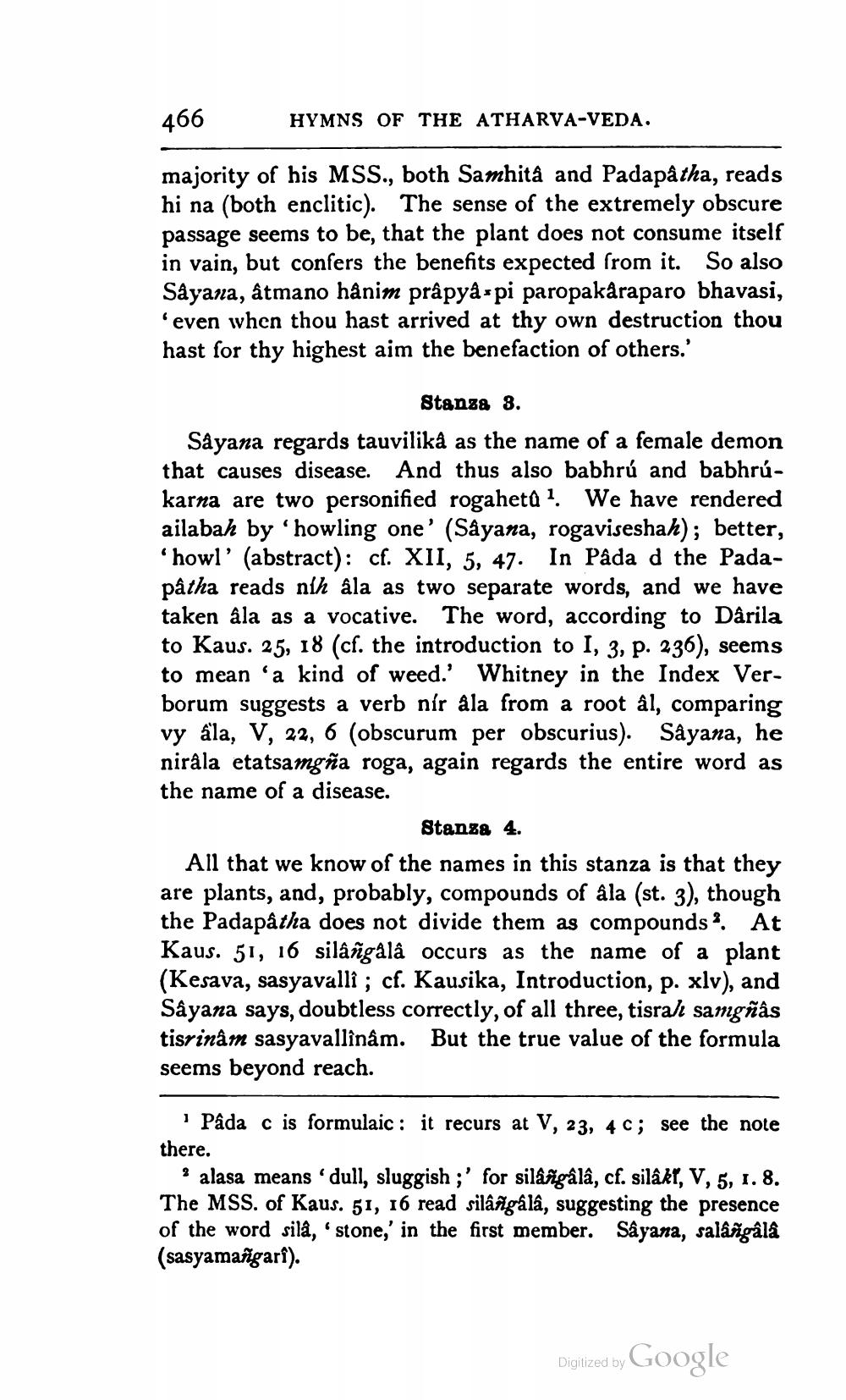________________
466
HYMNS OF THE ATHARVA-VEDA.
majority of his MSS., both Samhita and Padapatha, reads hi na (both enclitic). The sense of the extremely obscure passage seems to be, that the plant does not consume itself in vain, but confers the benefits expected from it. So also Sâyana, åtmano hånim prâpyåspi paropakaraparo bhavasi, 'even when thou hast arrived at thy own destruction thou hast for thy highest aim the benefaction of others.'
Stansa 8. Sayana regards tauvilika as the name of a female demon that causes disease. And thus also babhrú and babhrúkarna are two personified rogaheta 1. We have rendered ailabah by 'howling one' (Sayana, rogaviseshah); better,
howl' (abstract): cf. XII, 5, 47. In Pâda d the Padapâtha reads nih ala as two separate words, and we have taken ala as a vocative. The word, according to Dârila to Kaus. 25, 18 (cf. the introduction to I, 3, p. 236), seems to mean 'a kind of weed.' Whitney in the Index Verborum suggests a verb nír ala from a root ål, comparing vy ala, V, 22, 6 (obscurum per obscurius). Såyana, he nirala etatsamgña roga, again regards the entire word as the name of a disease.
Stanza 4. All that we know of the names in this stanza is that they are plants, and, probably, compounds of ála (st. 3), though the Padapatha does not divide them as compounds ? At Kaus. 51, 16 silângâlâ occurs as the name of a plant (Kesava, sasyavalli; cf. Kausika, Introduction, p. xlv), and Sayana says, doubtless correctly, of all three, tisral samgñâs tisrinâm sasyavallinâm. But the true value of the formula seems beyond reach.
· Páda c is formulaic: it recurs at V, 23, 4c; see the note there.
3 alasa means 'dull, sluggish ;' for silângâlâ, cf. silâkt, V, 5, 1. 8. The MSS. of Kaus. 51, 16 read silângâlâ, suggesting the presence of the word sila, stone,' in the first member. Sâyana, saláñgala (sasyamañgarî).
Digized by Google




